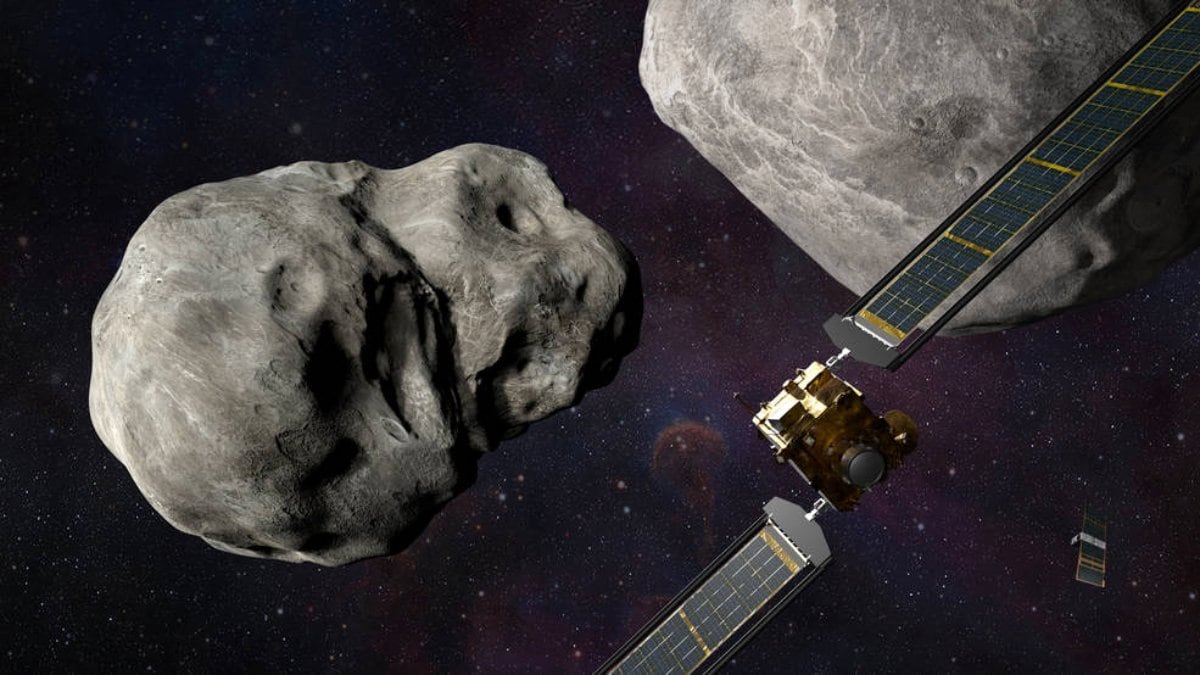Ten months after launch, NASA’s asteroid-deflecting DART spacecraft on Monday came close to a planned outcome in a test of the world’s first planetary defense system designed to prevent a doomsday collision with Earth.
The cube-shaped “impactor” vehicle, roughly the size of a vending machine with two rectangular solar arrays, was to fly by the asteroid Dimorphos, the size of a football stadium, and about 6.8 million miles (11 million km) from Earth at around 7 pm EDT (4:30 IST).
The mission’s final phase will test the ability to turn an asteroid’s trajectory into full speed, plowing into the object at high speeds to keep our planet out of harm’s way.
This is the world’s first attempt to change the motion of an asteroid or any celestial body.
DART, which will be launched by a SpaceX rocket in November 2021, has spent most of its journey under the guidance of NASA’s flight director, whose control will be handed over to an autonomous on-board navigation system during the final hours of the journey.
Monday evening’s planned impact will be monitored in real time from the Mission Operations Center at the Johns Hopkins University Applied Physics Laboratory (APL) in Laurel, Maryland.
DART’s celestial target is an asteroid “moonlet” 560 feet (170 meters) in diameter that orbits a five-times larger asteroid called Didymos, as part of a binary pair of the same name, the Greek word for twin.
Neither object poses any real threat to Earth, and NASA scientists said their DART test could not accidentally create a new existential threat.
Both Dimorphos and Didymos are small compared to the cataclysmic Chicxulub asteroid that hit Earth about 66 million years ago, wiping out about three-quarters of the world’s plant and animal species, including the dinosaurs.
According to NASA scientists and planetary protection experts, smaller asteroids are more common and pose a major theoretical concern in the near term, making the Didymos pair a perfect test subject for their size.
Also, their relative proximity to Earth and dual asteroid configuration make them ideal for DART’s first proof-of-concept mission, short for Dual Asteroid Redirection Test.
Robotic Mission Suicide
This mission is a rare example in which a NASA spacecraft must ultimately crash in order to succeed.
DART is planned to fly directly into Dimorphos at 15,000 miles per hour (24,000 kph), and its orbital track is hard enough to move it close to its large companion asteroid.
Cameras on the impactor and on the briefcase-sized mini-spacecraft launched from DART a few days earlier are designed to record the collision and send images back to Earth.
DART’s own camera is expected to return pictures at a rate of one image per second during its final approach, with those images streamed live to NASA TV an hour before impact, according to APL.
The DART team said it expects to shorten Dimorphos’ orbital path by 10 minutes but it will be successful for at least 73 seconds, making the exercise a viable technique to deflect asteroids on a collision course with Earth — if one is discovered. A small nudge to an asteroid millions of miles away could be enough to bring it safely back away from the planet.
The results of the test will not be known until a new round of ground-based telescope observations of the two asteroids in October. Earlier calculations of the initial location and orbital period of Dimorphos were confirmed during a six-day observing period in July.
DART is the latest of several NASA missions in recent years to explore and interact with asteroids, primitive rocky remnants from the formation of the Solar System 4.5 billion years ago.
Last year, NASA launched an investigation into the journey of the Trojan asteroid clusters orbiting Jupiter, while the OSIRIS-REx spacecraft is returning to Earth with a sample collected from asteroid Bennu in October 2020.
Dimorphos Moonlet is one of the smallest celestial objects to receive a permanent name and is one of 27,500 known near-Earth asteroids of all sizes tracked by NASA. Although none are known to pose an imminent threat to mankind, NASA estimates that many asteroids in the near-Earth vicinity have yet to be discovered.
NASA has pegged the total cost of the DART project at $330 million (roughly Rs. 2,700 crore), much lower than many of the space agency’s ambitious science missions.
© Thomson Reuters 2022












